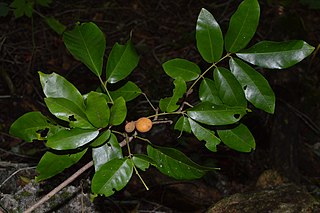
Aglaia mariannensis, is a tree endemic to the Mariana Islands and Guam with large dark green, glossy pinnately compound leaves, densely arranged on stems. Terminal leaf buds are often orange and fuzzy and look like praying hands.
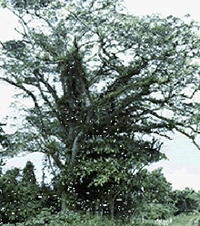
Serianthes nelsonii is a large tree endemic to Guam and Rota of the Mariana Islands. Only one mature tree exists on Guam, while 121 mature trees have been identified on Rota since 1984.

Gymnosporia bachmannii is a species of plant in the family Celastraceae. It is a shrub or tree endemic to the Cape Provinces and KwaZulu-Natal in South Africa. It is threatened by habitat loss.

Gymnosporia is an Old World genus of plants, that comprise suffrutices, shrubs and trees. It was formerly considered congeneric with Maytenus, but more recent investigations separated it based on the presence of achyblasts and spines, alternate leaves or fascicles of leaves, an inflorescence that forms a dichasium, mostly unisexual flowers, and fruit forming a dehiscent capsule, with an aril on the seed. It is dioecious, with male and female flowers on separate plants.

Tabernaemontana pandacaqui, known as windmill bush and banana bush, is a species of plant in the dogbane family Apocynaceae.
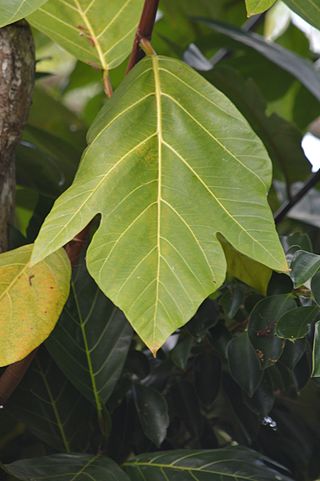
Artocarpus mariannensis, also known as the Marianas breadfruit or the seeded breadfruit, is a species of plant in the mulberry / fig family, Moraceae. It is endemic to the Mariana Islands and Guam. It has been utilised extensively by the Micronesian people, being one of the staple food crops that was introduced to other islands in Micronesia.
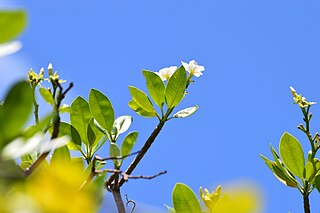
Cerbera dilatata was formerly considered to be a distinct species of tree in the family Apocynaceae endemic to the Mariana Islands. However, after a taxonomic reorganization, this species name is considered to be a synonym of the more widespread Cerbera odollam.

Bikkia tetrandra is an herbaceous member of the family Rubiaceae. It is native to Papuasia and islands of the western Pacific. The stems ignite easily and can be used to make torches or candles.
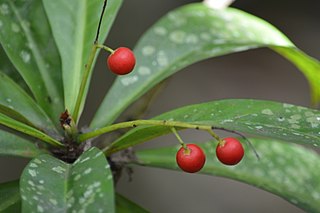
Discocalyx megacarpa is a species of plant in the family Primulaceae. It is endemic to Guam and the islands of Rota and Saipan within the Commonwealth of the Northern Mariana Islands. It is an understorey shrub, growing to 2 m tall, with lanceolate green leaves, paniculate, cream-coloured, unisexual flowers, and globose, red fruits each containing a single large ribbed seed.
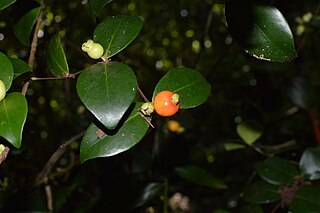
Eugenia palumbis is a shrub with edible fruits in the family Myrtaceae. It is endemic to the Mariana Islands, including Guam and the Commonwealth of the Northern Mariana Islands.
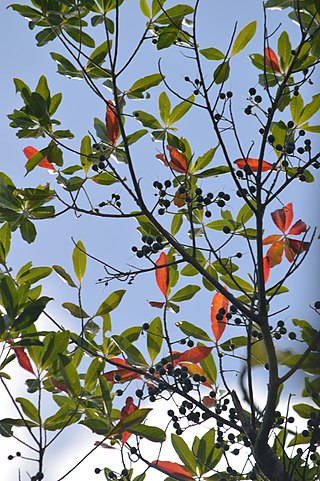
Elaeocarpus joga is a species of tree in the family Elaeocarpaceae. It is native to the Mariana Islands and Palau. It is a moderately-sized tree with blue-coloured, round, 1.5cm diameter fruit and leaves which turn bright red before they senescence.
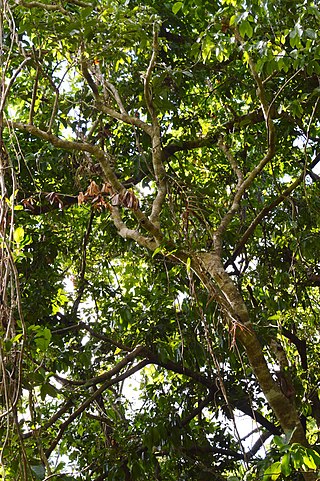
Drypetes dolichocarpa is a species of tree in the family Putranjivaceae found in the Mariana Islands.
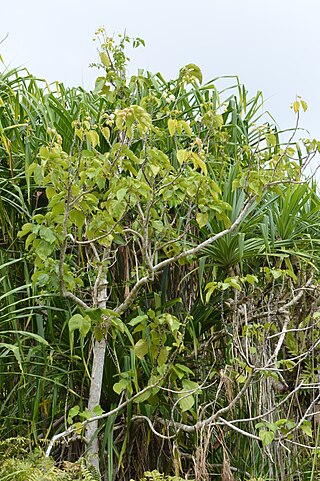
Hernandia labyrinthica is a species of tree in the family Hernandiaceae indigenous to Indonesia, New Guinea, the Solomon Islands, and the islands of Rota and Guam in Micronesia.
Claire Lynn Raulerson was an American plant biologist who worked in Guam and specialised in the study of Micronesian plants, especially those of Guam and the other Mariana Islands. She held her position in biology at the University of Guam for over forty years.
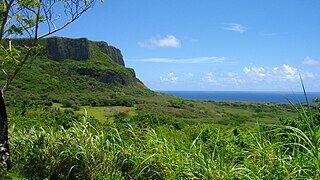
The Marianas tropical dry forests is a tropical and subtropical dry broadleaf forests ecoregion on the Marianas Islands in the western Pacific Ocean.

The Yap tropical dry forests is a tropical and subtropical dry broadleaf forests ecoregion in Micronesia. It includes the Yap Islands and neighboring atolls in the Federated States of Micronesia.

Syzygium thompsonii is an endemic tree of the Mariana Islands of Guam, Rota, and Saipan with a striking appearance due to its abundance of white flowers and edible fruit that grow directly from the trunk. It is related to the Malay apple but bears smaller tart fruit.
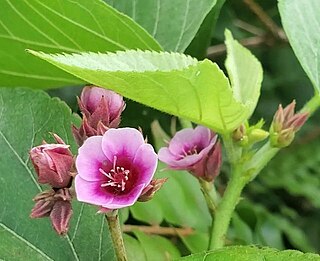
Melochia villosissima, is a tree endemic to northwest Pacific Ocean islands, including South Iwo Jima and western Micronesian Islands. It is a small pioneer tree often found along roadsides and has a striking appearance due to its clusters of pink flowers.
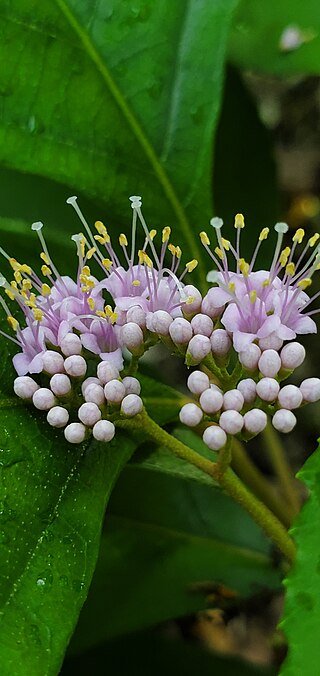
Callicarpa lamii is a plant in the mint family that is endemic to the Mariana Islands. It is one of two Callicarpa plants endemic to the Mariana Islands, the other being Callicarpa candicans var. paucinervia.




















